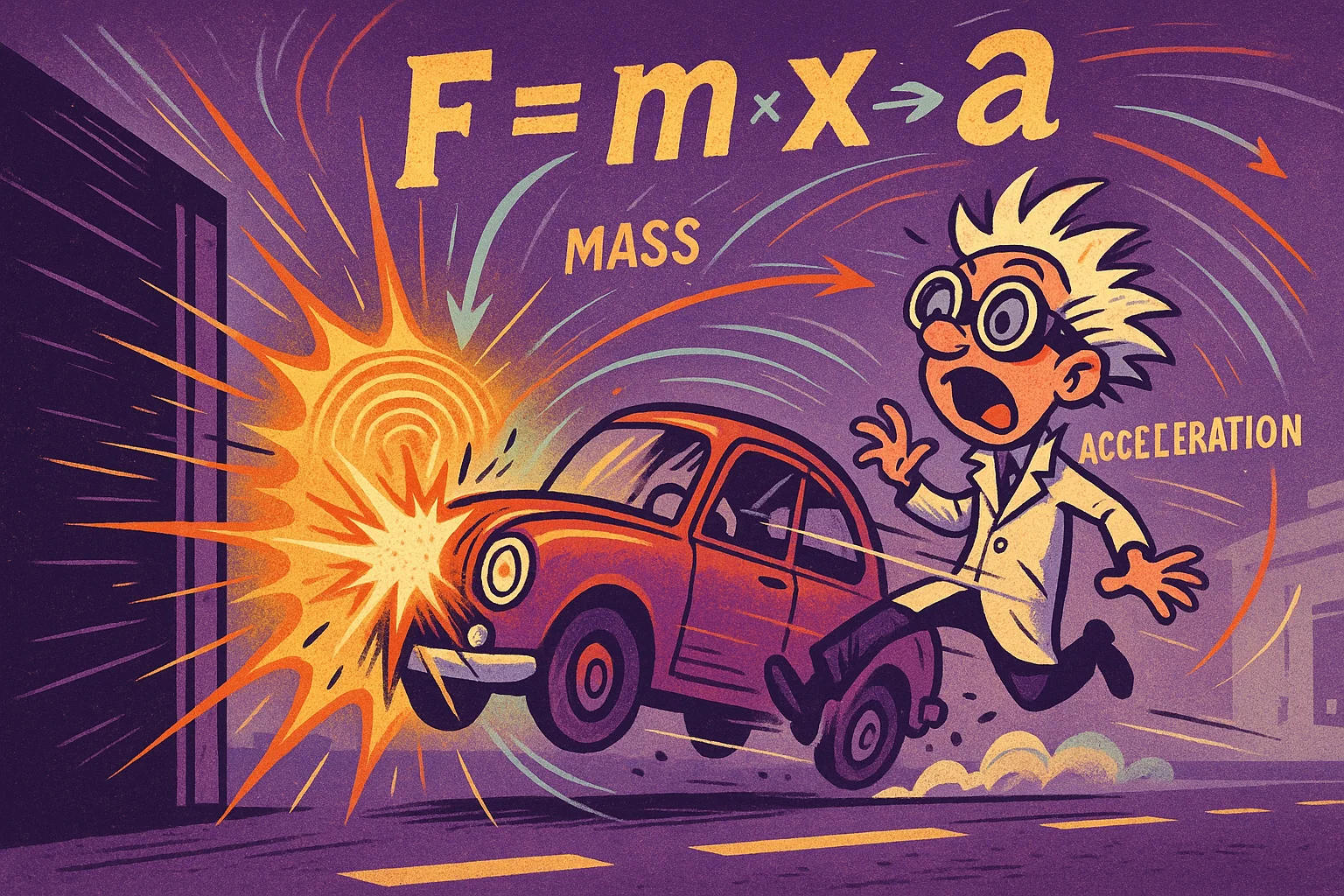Physics is the quiet force behind everything we do—from the arc of a basketball to the hum of your car engine, from the pressure in your bike tires to the way your phone falls (screen-first, of course). It’s not just about formulas on a blackboard; it’s about motion, energy, force, and matter all working together in the background of everyday life. Whether you're a student, a teacher, or just someone who’s ever asked, “Why does that happen?”, physics gives you the tools to find out. Our calculators help make those answers clearer—turning abstract numbers into something you can feel, test, or apply. Because understanding physics isn’t just for exams. It’s how you start to see the world in motion, with purpose.
Motion: It Starts with a Push (or a Pull)
Motion is one of the first things we notice as kids—rolling toys, running around, jumping off stairs. But behind every move we make, there’s a set of simple, reliable rules that physics helps us understand. Whether you’re walking to class, biking uphill, or tossing a football across the yard, you’re engaging with motion—and that means working with velocity and acceleration.
Velocity answers the question: How fast am I going, and in what direction? It's what tells you whether you’re cruising at 30 mph or sprinting down a track.
Acceleration, on the other hand, is about change. It's how quickly your speed increases—or decreases. Slamming the brakes, getting pushed from behind, or speeding up on a treadmill? That’s acceleration at work.
Understanding these two ideas helps you make sense of movement all around you. If you’re curious about your own motion, our [Velocity Calculator] and [Acceleration Calculator] can give you real numbers to match what you feel.

Force: The Invisible Push Behind Every Movement
Every time you kick a ball, open a heavy door, or push a shopping cart, you're experiencing force—a physical interaction that causes something to move, stop, or change direction. It’s not magic; it’s measurable. And at its core is one of physics’ most famous equations: F = m × a (Force = mass × acceleration).
Put simply, the heavier something is and the faster you try to move it, the more force you need. That’s why lifting a bag of cement feels different from tossing a pillow—and why a fast-moving object can pack a serious punch.
Physics helps us calculate and understand that impact, not just in labs, but in everyday life.
🏎 Real-life example: When a car crashes into a wall at 60 km/h, it experiences massive force because of its weight and sudden deceleration. That’s why seatbelts and airbags are life-saving—they help absorb and spread that force.
Curious about how much force is in play? Try our [Force Calculator] to see it in action.

Energy: What Moves Things and Makes Stuff Happen
Energy is what makes life move—literally. It powers our muscles, engines, rollercoasters, and even the flick of a light switch. Whether you're biking up a hill or watching a meteor streak through the sky, energy is in action. And one of the most relatable forms is kinetic energy—the energy something has because it's moving.
Think of a speeding soccer ball, a skateboarder flying down a ramp, or a coin dropping to the floor. Each carries kinetic energy, and the faster or heavier it is, the more energy it holds.
Want a quick shortcut? Use this formula:
📘 Kinetic Energy = ½ × mass × velocity²
That means if you double the speed, the energy becomes four times greater—small changes can make a big impact.
If you’re curious about how much energy something has in motion, try our [Kinetic Energy Calculator]. It’s a powerful way to connect the math to what’s really happening in front of you.

Pressure: More Than Just Weather Talk
Pressure isn’t just something you hear about in weather forecasts—it’s something you experience constantly. When you press your finger on a table, you're applying force over a surface. That’s pressure in action.
From inflating a tire to taking a deep breath, pressure plays a vital role in how systems work. It's what makes hydraulics lift heavy machines, helps airplanes fly, and even keeps your blood circulating.
We often don’t notice it until something changes—like a flat tire or a sudden headache at high altitude. Even your lungs rely on pressure differences to pull in air with every breath.
🚲 Real-life example: “Ever noticed your bike tires feel firmer on cold mornings? That’s not your imagination. As temperature drops, the air molecules inside slow down and spread less, causing the pressure to drop. It's basic gas physics—quiet, but powerful.”
If you want to see how force and surface area interact, explore our [Pressure Calculator] and see how this invisible force shapes everyday life.

Physics Isn’t Just for Scientists
You don’t need a lab coat or a chalkboard covered in equations to appreciate physics. It's for anyone who's ever paused to wonder, “Why did that fall?”, “How fast is this going?”, or “What makes this move?” Those everyday questions? They’re the heart of physics.
Whether you're a student working through a tricky homework problem, a teacher looking for better ways to explain motion, or simply a curious mind trying to make sense of the world—you’re already doing physics. Our calculators are here to help you turn those questions into answers, and those answers into understanding.
Because physics isn’t about memorizing formulas—it’s about seeing the hidden structure behind what’s real. And once you start seeing it, you’ll never look at the world the same way again.
